Analysis
These Six Charts Show How Lockdown Has Impacted Mobility In India
Arihant Pawariya
Apr 04, 2020, 03:36 PM | Updated Apr 09, 2020, 10:49 AM IST
Save & read from anywhere!
Bookmark stories for easy access on any device or the Swarajya app.


Today (4 April) is the 14th day of the nationwide lockdown. Retail stores, pubs, restaurants, hotels, parks, bus stops, trains, metro stations and airports — all wear a deserted look.
The streets and roads have been so empty for so many days that dogs are now marking their territory over them. The nation was stopped in its tracks starting 22 March when Prime Minister Narendra Modi appealed to everyone to stay indoors.
From next day, state governments imposed lockdowns in their own jurisdictions. On 24, a nationwide lockdown came into force without any exceptions.
Indian railways, the backbone of the nation’s public transport system, came to a grinding halt and so did buses and metros which ferry millions of passengers in India’s cities and within states everyday.
All thanks to a 125 nano metre-sized virus particle. Can this “once in a lifetime” change in lifestyle of millions be quantified? Google, the world’s biggest tech behemoth, has made an attempt to do so by sourcing google location data from mobile phones of millions of people.
This is essentially a sample survey of how the mobility of users of Google Maps has changed since the lockdowns have been enforced across the globe.
The insights gathered from this trove of location data from millions of users have been published separately for each individual country. How much of this is actually representative of the country’s population depends if there are enough number of users of google maps in a particular location.
As far as India is concerned, tens of millions of people use smartphones and most of them have google maps feature on their phone and so, the report on India, though not authoritative of the nation’s behaviour, can give some good insights on the larger direction we have taken in implementing social distancing.
Below are six trends which show how mobility of Indians has changed in the past one month.
1. Retail and recreation
Mobility trends for places like cafes, restaurants, theme parks, shopping centres, libraries, etc show a reduction of a massive 77 per cent in visits and stay duration (29 March) compared to the baseline.
The same figure for the United States is only 47 per cent and it sort of explains why the cases are rising rapidly in that country. In Italy, which is under a national lockdown for over a month, mobility trends show a massive fall of 94 per cent. Situation is only now starting to come under control in Italy.
In the graphs below, changes for each day are compared to a baseline value for that day of the week. The baseline value is the median value, for the corresponding day of the week, during the five week period from 3 January to 6 February.
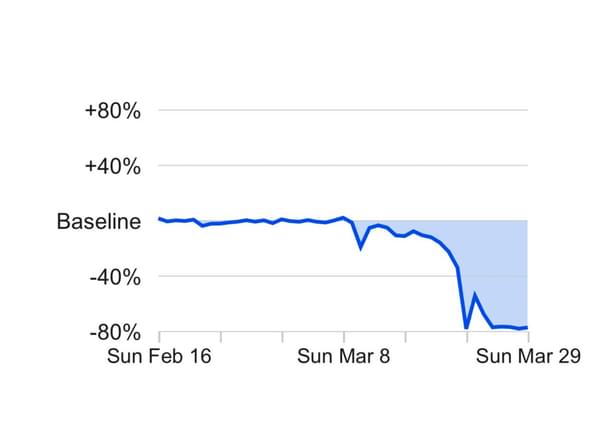
2. Groceries and Pharmacies
Mobility for places which cater to essential needs and services like grocery outlets, food warehouses, farmers markets, food shops, drug stores and pharmacies also saw a decline of 65 per cent.
In the United States, mobility trends show a fall of only 22 per cent in visits to grocery and drug stores, whereas the same for Italy is 85 per cent.
And as the graph shows, these sudden reductions in India happened in one go, starting on 22 March when Janata Curfew was implemented.

3. Parks
Visits and duration of stay at parks, beaches and gardens, etc also saw a fall of 57 per cent compared to the baseline.
In the United States, mobility trends show only a decline of 19 per cent whereas the same figure for Italy is 90 per cent.
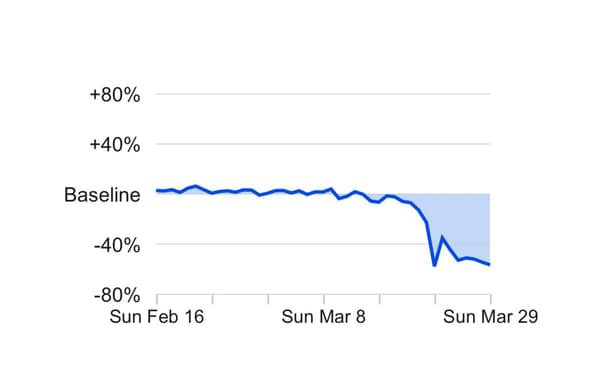
4. Transit stations
Mobility trends for places like public transport hubs such as subway, bus and train stations show a fall of 71 per cent. This is slightly surprising given that since 22 March, all forms of public transport has ceased to operate in the country. So, the reduction should’ve been higher.
Compared to India, in the United States, a fall of only 51 per cent is being witnessed whereas the same figure for Italy is 87 per cent.
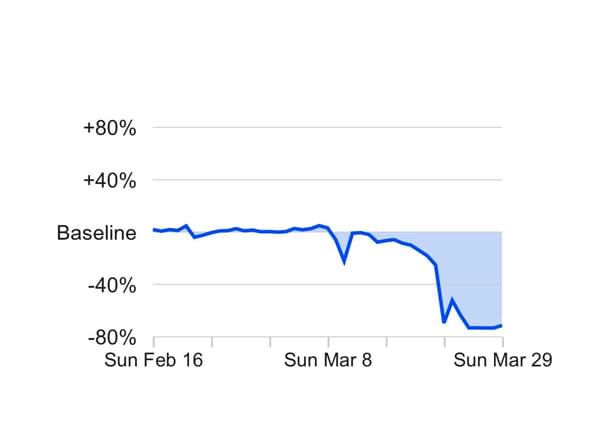
5. Workplaces
As expected, visits to workplaces have seen less fall compared to other public places like parks, malls and train stations. Mobility trends show only a reduction of 47 per cent in visits to workplaces. This could be largely attributed to the fact that workplaces supplying essential services and goods are still open.
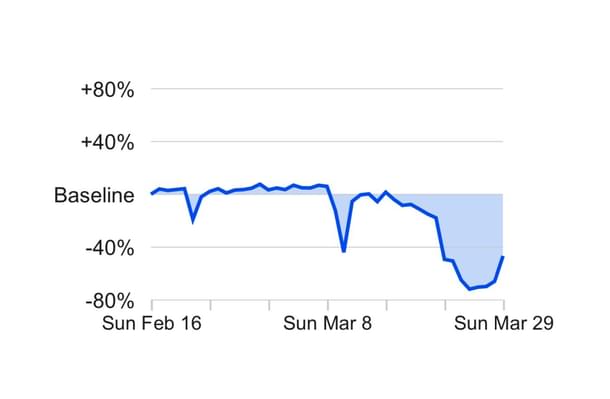
6. Residential
Mobility trends for places of residence, expectedly, show a sudden spike. As most people are staying home and moving only within their residential complexes or native places, mobility there has seen a jump of 22 per cent.
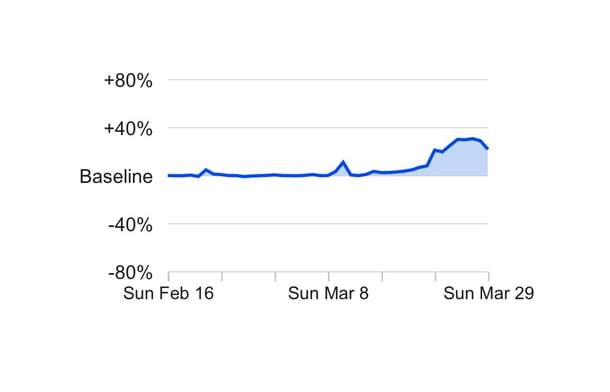
Since location accuracy and the understanding of categorized places varies from region to region, Google has recommended not to use its data “to compare changes between countries, or between regions with different characteristics (e.g. rural versus urban areas).”
The reports have been compiled only to help people and the governments provide a rough idea of how policies of social distancing may be panning out in their cities or countries.
Arihant Pawariya is Senior Editor, Swarajya.




